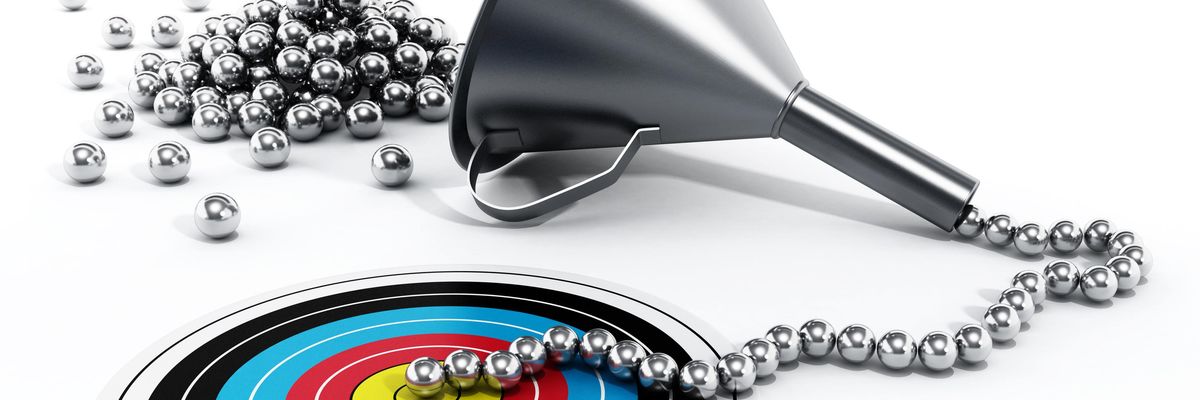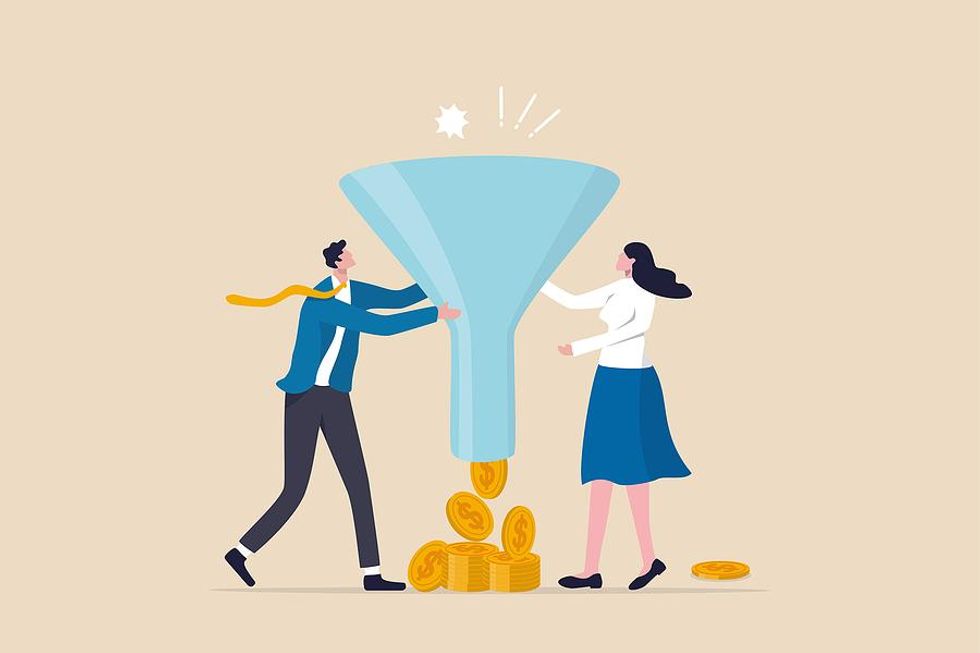
Concepts such as the marketing funnel are discussed less often these days as we focus more on digital. But as the lines continue to blur between sales and marketing, with packaged solutions for customer journey analytics and customer data platforms introduced almost every day, the funnel is undergoing a bit of an upgrade, and new dialogue and buzz are emerging.
The marketing funnel is now referred to as the full funnel, cutting across every interaction the consumer has with the firm—from awareness through consideration and purchase.
The full funnel considers the journey of the suspect, the prospect, and the customer. More than ever before, we are closer to being able to capture all of these moments of truth by using these tools:
- Open gardens and APIs
- Advertising ecosystems
- Marketing ecosystems
- CRM solutions and more
- Customer data platforms (CDPs) what I called CDPs 2.0 or tools line Snowflake
(Quick history tangent: The marketing funnel leveraged prospect and customer databases. When CDPs were developed, these databases were integrated. I refer to enhancements to current CDPs, including the integration of real-time data and prospect/customer states, as CDP 2.0.)
These tools, especially CDP 2.0, have improved our ability to connect the dots across the full funnel allowing us to capture these events and experiences, to track more of the journey.
The full funnel includes sales, customer management, and other moments of truth. A snapshot of the prospect or customer can be captured and stored in the CDP 2.0 for future analyses and action. This connected ecosystem allows marketing, sales, and customer professionals to optimize the full funnel at all points along the journey, from early awareness and exploration of options in various channels to product or service purchases. Additionally, the full funnel allows us to understand how customers advance in their journey or relationship, engaging with the brand's products and services or buying additional products thereby deepening their relationship. This idea of knowing or understanding both the marketing and sales funnels advances the relationship and gives the firm a leg up in designing the right offering and overall experience.
This chain of events view is a step change in our thinking. Previously, using the marketing (or sales) funnel, businesses focused on optimizing dropouts. With technology giving us a more robust, more comprehensive view of prospects, customers, and their behaviors, we can analyze what activities and engagements led to a sale. What led to someone dropping out of an application or a pipeline for a particular product or service? There are micro-pipelines that we can now analyze and optimize. We can understand the profile of specific customers and the media that they came in on. Does that SEM channel or keyword the consumer searched create a customer? More importantly, will it create a profitable customer? We can decide on where to spend the next marketing dollar based on impact and plan for better customer journeys and outcomes.
Gone are the days of only looking at marketing-qualified leads (MQLs) and sales-qualified leads (SQLs). Now we can examine the full view of everything and view MQLs/SQLs as micro-optimizations with the broader, fuller customer picture in mind.
So What Business Activities Are Supported By The Full Funnel?

Bigstock
1. Manage contacts across more channels, including the metaverse and AR/VR
2. Quickly recognize customers and prospects in any channel
3. Understand what conversations, offers, and interactions work at the micro level and in real-time (not just at the segment level)
4. Understand how people score on various algorithms at different points in time and across channels to increase relevancy and reduce friction
5. Understand customer and prospect value as well as potential value over time
6. Understand channel usage and behavior in real time and across channel types
7. Understand the consumer journey from suspect to prospect to customer
8. Partner with and understand third-party data where it adds value for the consumer
9. Leverage auto ML/AI to learn in real time and consider the full multidimensionality of the data in the CDP 2.0
10. Understand service events and outcomes, especially their impact on the customer journey
So, if you are thinking about canceling your investments in your CDP, reconsider.
In summary, the connected ecosystem powered by cloud solutions (including CDPs of the 2.0 variety) and Analytics as a Service (AAAS) has provided many opportunities for the entire organization to work together to understand more about prospects and customers than ever before. The focus on pipelines and deal dropouts has been supplanted by looking at the comprehensive full funnel from top down, from digital advertising to predicting churn from multiple relationship customers.
I look forward to your thoughts on how your firm has changed its view of funnels, CDPs, and the idea of the 360 view of the customer.
- Top 5 Questions To Answer To Get Your Data Strategy Right - Work ... ›
- How To Maximize Your Expensive Technology Investment - Work It ... ›
- 5 Tips For Building Resilience In Sales Teams - Work It Daily ›
- 6 Tips On B2B Marketing Communications - Work It Daily ›

 Bigstock
Bigstock Bigstock
Bigstock Bigstock
Bigstock


